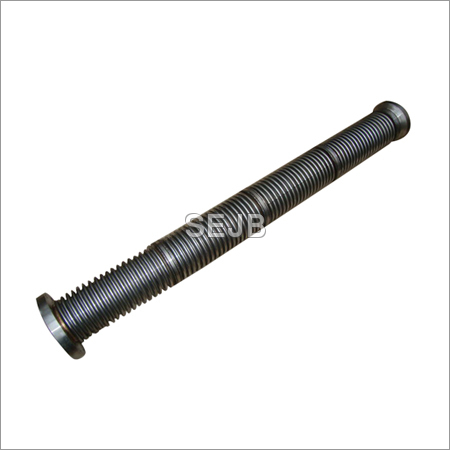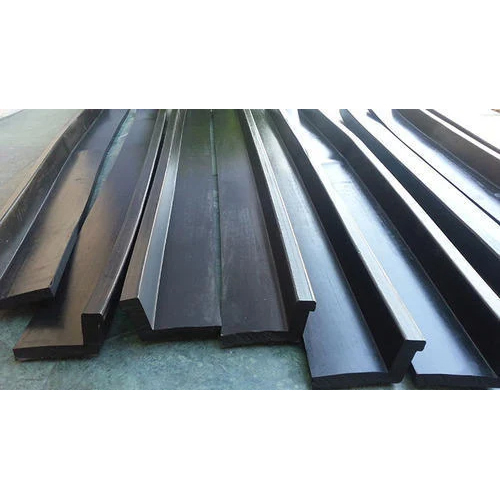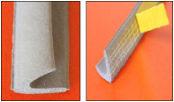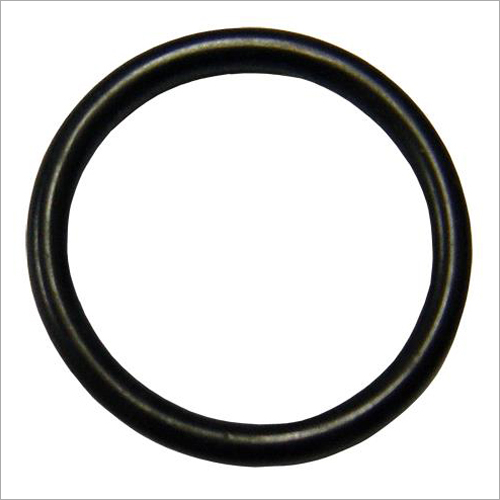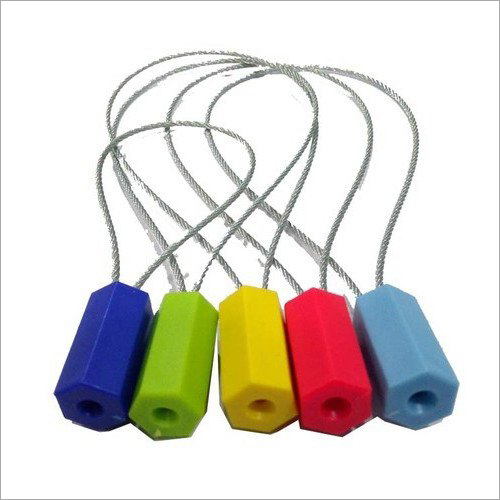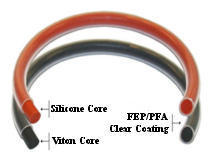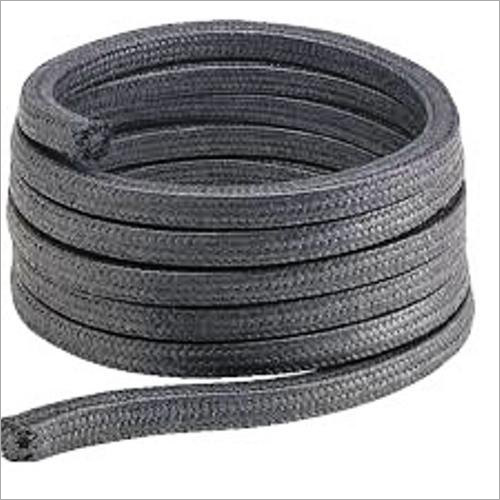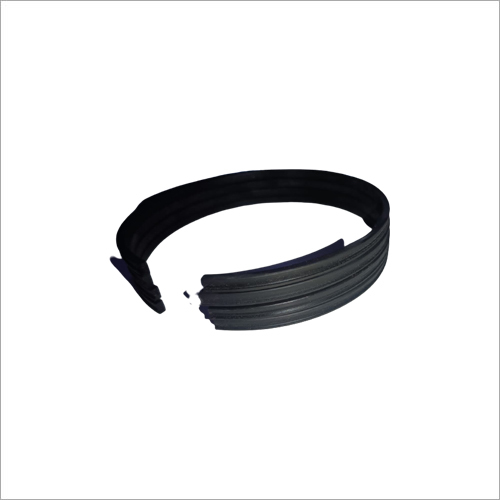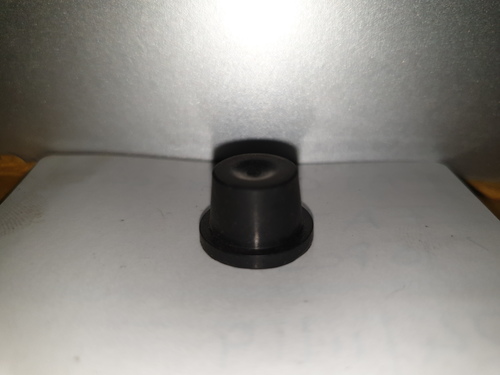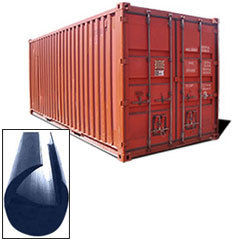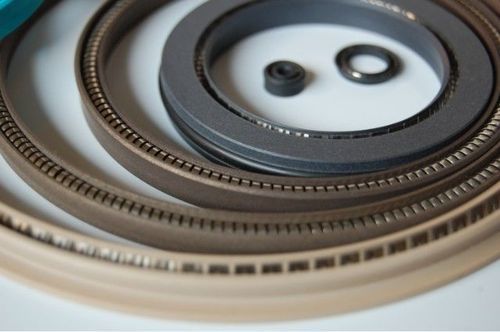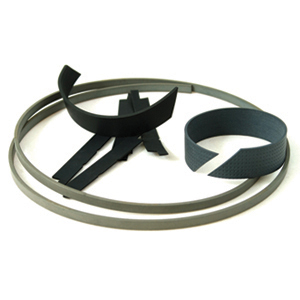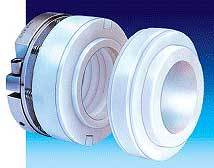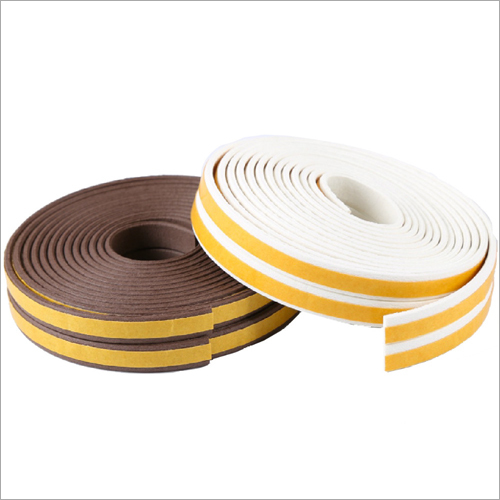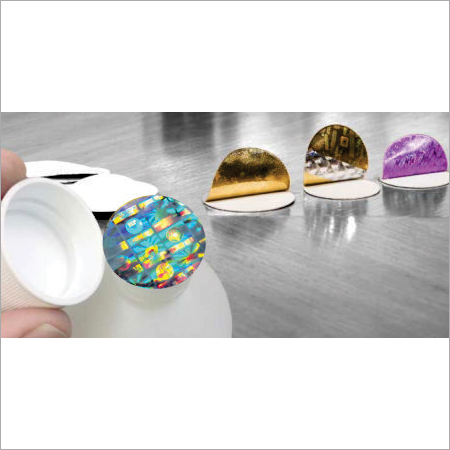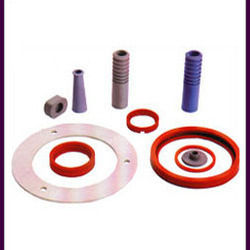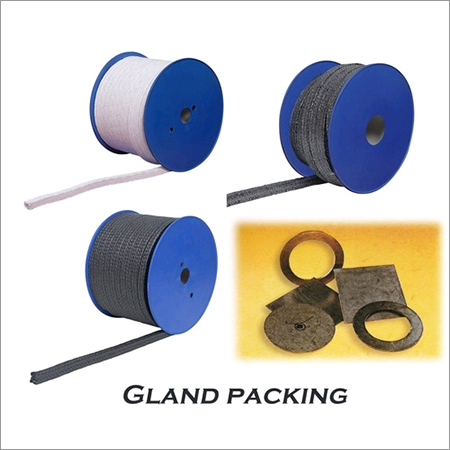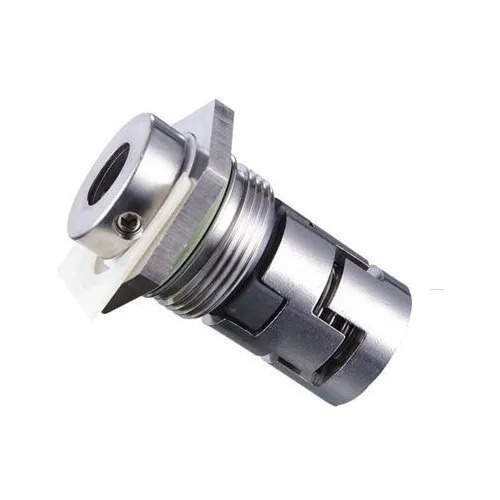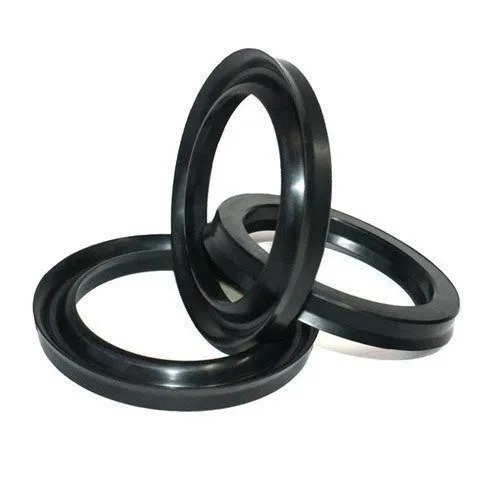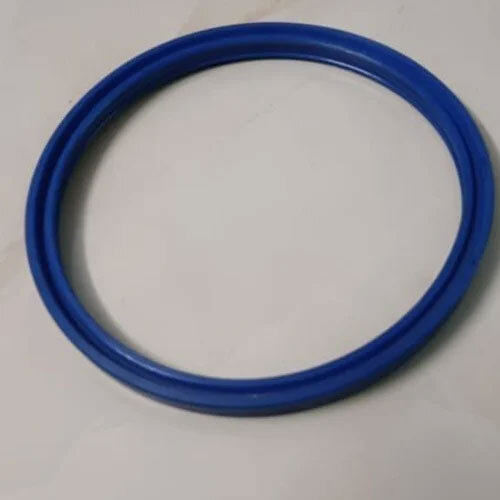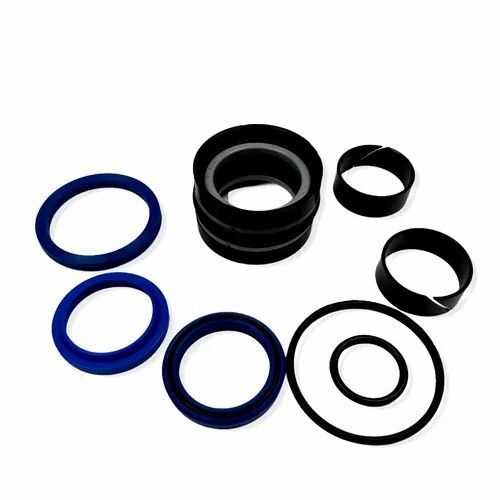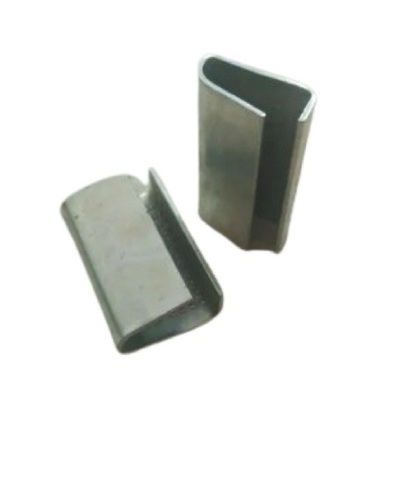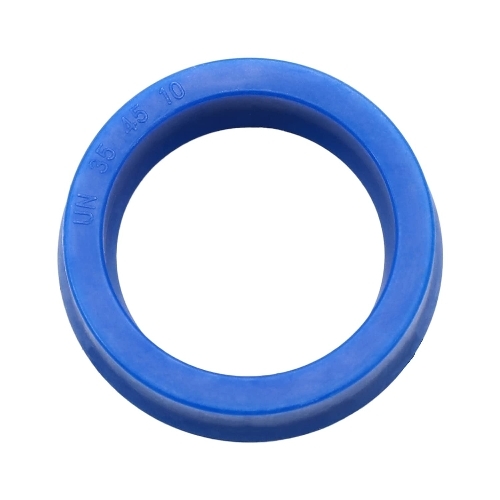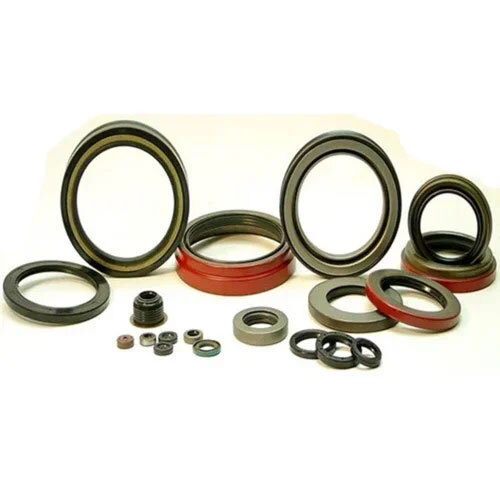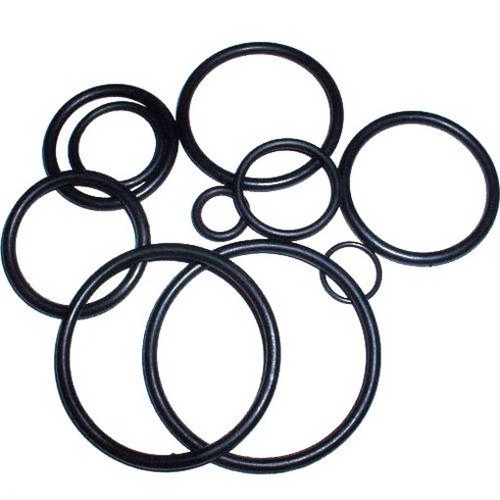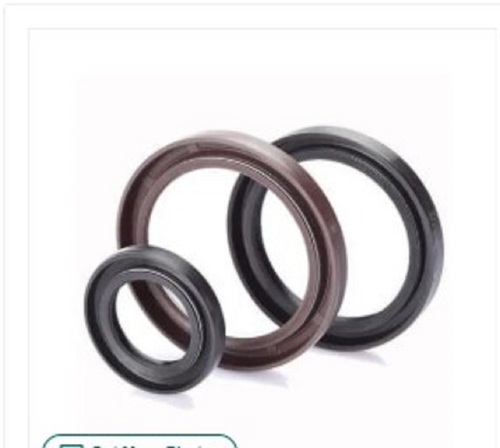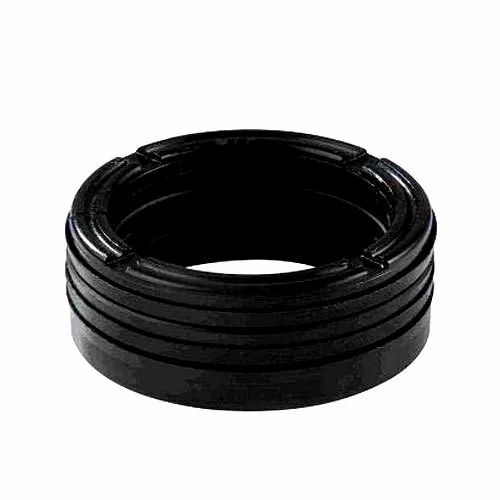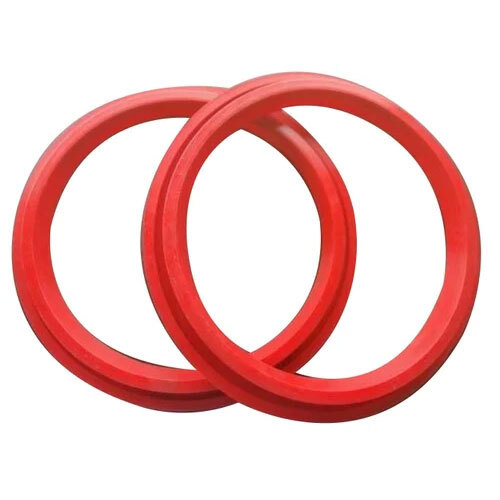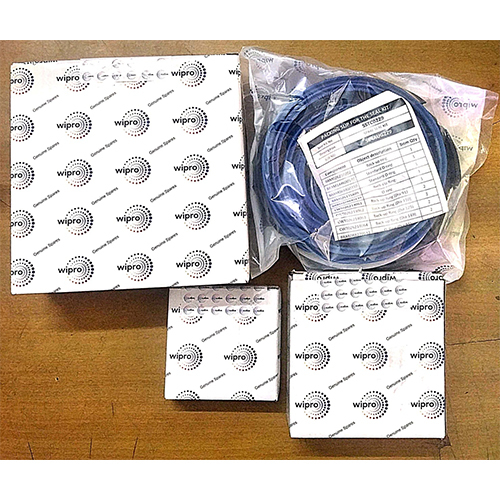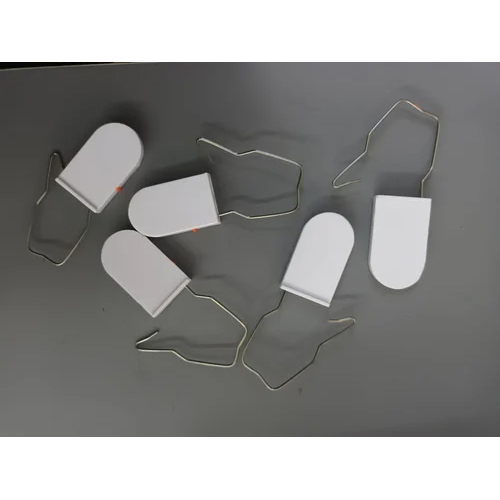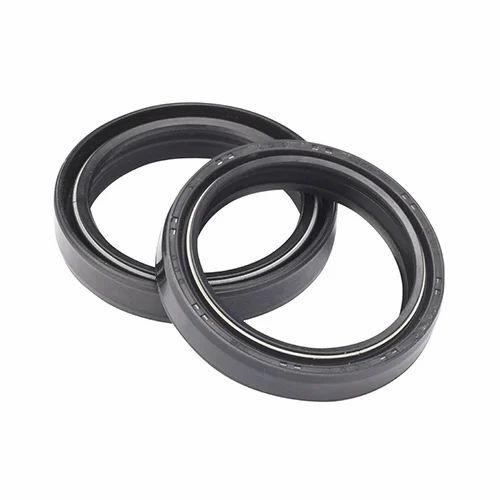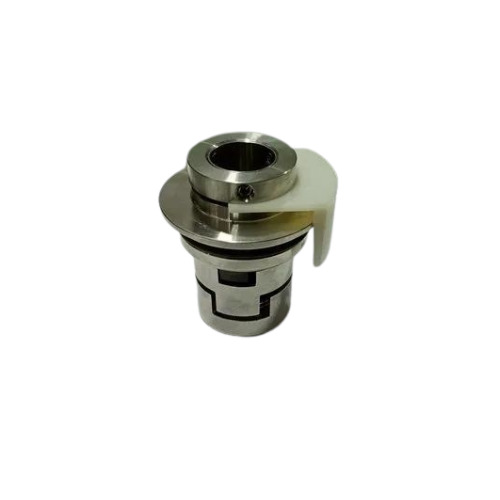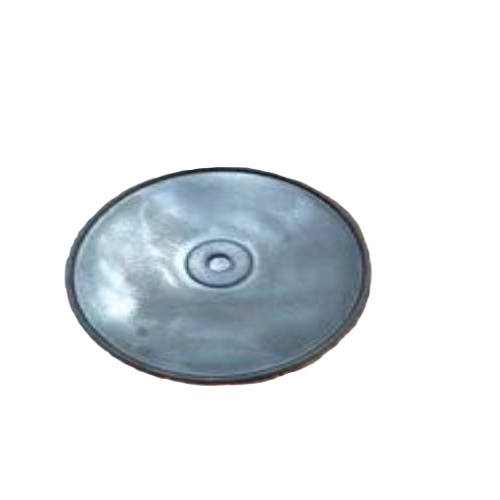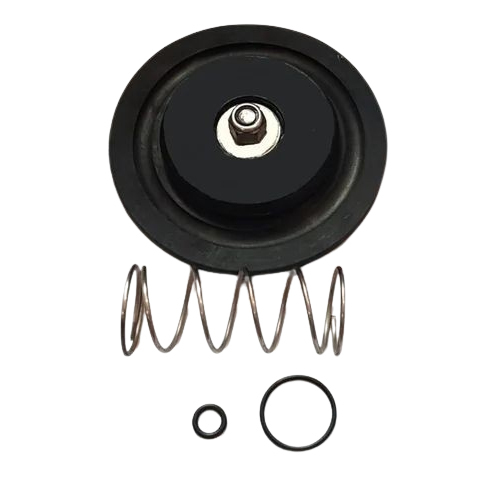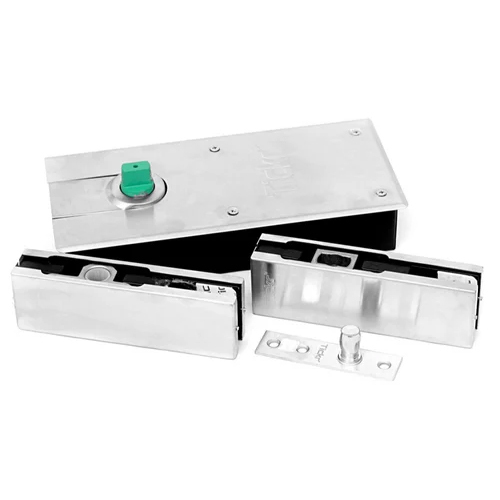Seals
(17607 products)Economical Sponge Drum Seals
Price: 3 USD ($)/Piece
MOQ1000 Piece/Pieces
MediumWater
Working Temperature-10 to + 125 Celsius (oC)
MaterialRubber
ShapeRing Gasket
Hardness25 to 30
ApplicationSealing
Saga Elastomer Pvt. Ltd.
Palghar
 Trusted Seller
Trusted Seller9 Years
Ss Metal Bellows Seal
Price: 500 INR/Piece
MOQ10 Set/Sets
MaterialSS
StyleBellow Seal
ShapeAny
Shah Expansion Joints (bellows) Manufacturers
Vadodara
Headspace Crimp Aluminum Cap With Septa - 20 Millimeter Diameter, Silver Color, Dual Layer Sealing, High Temperature Resistance
Price: 800 INR/Pack
MOQ1 Pack/Packs
ColorSilver
Product TypeHPLC Vials Crimper
MaterialAluminium
ShapeRound
Diameter20 Millimeter (mm)
SizeDifferent Available
Black Z Seal Dam Gate Seals
Price: 1450 INR/Meter
MOQ10 Meter
Product TypeZ Seal Dam Gate Seals
Thickness5-10 mm Millimeter (mm)
ColorBlack
V Profile Gasket
Product DescriptionThe V Profile Gasket is an extruded and self adhesive EPDM cellular rubber sealing strip.\015\012\015\012Typical Applications\015\012Window & doors: draught excluder for medium gaps in older frames
Rubber O Ring - Application: Industrial
Price: 200 INR/Piece
MOQAs Per Requirement Piece/Pieces
ColorCustomize
SizeCustomize
MaterialRubber
StyleO Ring
ApplicationIndustrial
Plastic Rope Wire Seals
HardnessDurable and strong
ToleranceLow tolerance for tampering or breaking
MaterialPlastic and steel wire
StyleRope wire seal, Other
ShapeHexagonal body
TemperatureSuitable for standard operating temperatures
Silicone Inflatable Gasket Application: For Industrial
Price: 500.00 INR/Piece
MOQ1 Piece/Pieces
Hardnessyes
UsageIndustrial And Commercial
ColorWhite
SizeDifferent Sizes Available
MaterialRubber
ApplicationFor Industrial
Softex Industrial Products Pvt. Ltd.
Kolkata
Pfa Encapsulated O-Rings
Product DescriptionOur company is the noteworthy names engaged in manufacturing, trading and supplying an outstanding array of PFA Encapsulated O-rings in Vadodara, Gujarat, India. These products have been designed and engineered using a high quality of materials and we ensure that they have been manufactured keeping
Kp Rubber & Polymer
Vadodara
 Super Bonanza
Super Bonanza Trusted Seller
Trusted Seller Super Premium
Super Premium10 Years
 Super Premium
Super PremiumGland Packing Seal - Durable Synthetic Fiber Material | High Pressure Resistance, Flexible Design
Price Trend: 1200.00 - 10000.00 INR/Kilograms
MOQ50 Kilograms/Kilograms
FOB PortVadodara, Gujarat
Payment TermsCash in Advance (CID), Cheque
Supply Ability10000 Per Month
Manual Round Grooved Ring
Price: /Piece
MOQ1 Piece/Pieces
Product TypeGrooved Ring
MaterialRubber
ComputerizedNo
Automatic GradeManual
Drive TypeMechanical
ColorBlack
Rubber Seals - Color: As Per Requirement
Price: 50 INR/Piece
MOQ100 Piece/Pieces
ColorAs Per Requirement
Container Seals
Product DescriptionORPL Container seals are use to prevent air, moisture, heat and water from entering into the container and they help in preservation of the stored articles
PTFE Seals - High-Temperature Resistant, Chemical-Resistant Material | Versatile Application for Industrial Use
MOQ1 Piece/Pieces
FOB PortAHMEDABAD / NAVA SEVA
Payment TermsCash in Advance (CID), Cheque, Cash Advance (CA)
Supply Ability1000 Per Day
Dhwani Polymer India Private Limited
Ahmedabad
Pump Cartridge Seal
Product Description\015\012Our company has gained immense recognition in this domain for manufacturing and presenting an excellent assortment of Pump Cartridge Seal. These seals are used in chemical and petrochemical industries. Available at competitive prices in the market; our offered range of cartridge seals is kno
Pneumatic Seals - Synthetic Elastomers, Custom-Made High Pressure Solutions | O-Rings, Wiper Seals, Chevron Packing Seals
Product DescriptionSeals act as a heart for the industries to prevent leakage of fluids.The selection of seals are mainly dependent upon the applications such as static or dynamic, the dynamic condition is further classified as Resiprocatory or Rotary. The seals are classified as O\342\200\231Rings, U/V Seals and OilS
Guide Strips - Durable Polymer Material | Precision Cutting and Easy Application
Price Trend: 300-500 INR/Set
MOQ6 , Number
Product DescriptionGuide Strips
Steel Strapping Seal - Durable Steel Material, Multiple Sizes Available | Ideal for Heavy-Duty Applications
Product DescriptionUnderstanding the requirements of our valued patrons, we are engaged in offering Steel Strapping Seal. These are offered in multitude sizes and rack options to choose from. These Steel Strapping Seal is offered at industry leading rates.\015\012
Bellow Seals - Hydraulically Balanced, Compact Design for Easy Installation and Minimal Maintenance | Uniform Pressure Distribution with Multiple Springs for Effective Sealing
Product DescriptionWe are Exporter, Manufacturer & Supplier of Bellow Seals in Navi Mumbai, Maharashtra, India. This is the most commonly used seal range for various rotating equipments because of its simple construction and all purpose utility employing secondary seal in the form of a rubber bellow. These seals also
Whether Strip Door Seal - Color: Yellow Brown White
Price: 1000 INR/Piece
MOQ10 Piece/Pieces
ColorYellow Brown White
SizeStandard
UsageIndustrial
MaterialSilicone
ShapeFlat
Temperature-40 to +120 Celsius (oC)
Western Polyrub India Private Limited
Mumbai
Silicone Sponge Gaskets - 0.5 mm to 50 mm Thickness | Durable, Temperature Resistant, Abrasion Resistant Gasket Strips
Product DescriptionThese silicone sponge gaskets and strips that are used for various packaging and sealing purposes. We manufacture these gaskets and strips using elastomers of different sizes & shapes. Along with durability, Silicone Sponge Gaskets are also resistant to abrasion and temperature. These packing gasket
Kiran Rubber Industries.
Mumbai
 Super Seller
Super Seller14 Years
Silicon Rubber Seal - Superior Quality Material | High Durability, Market Demand
Product DescriptionWe are one of the reputed organization engaged in providing superior quality Silicon Rubber Seal. These Silicon Rubber Seal are good demand in the market due to high quality and durability. These products are available in market at competitive rates. \015\012
Holographics Wads
Price: 5.0 INR/Pieces, Pieces
MOQ50000 Pieces, Pieces
Payment Terms[, ]
Main Export Market(s)[, ]
Main Domestic Market[, ]
Model Bearing - Chrome Steel, 1-260mm OD, ABEC-1 to ABEC-9 Precision | ISO9001 Certified, Versatile Use in Motors, Fans, and Conveyors
Price Trend: 0.18 - 0.33 USD ($)/Piece
MOQ500 Piece/Pieces
Length1-260 Millimeter (mm)
SizeOD 3-260mm
ColorOEM
Product TypeDeep Groove Ball Bearing
Weight0.1 Kilograms (kg)
UsageMachine, Fan, Motorcycle
Hydraulic Seals - Pressure â¤31.5Mpa, Temperature -35~+80°C, Speed â¤0.5m/s | Durable for Reliable Service Life
Product DescriptionWe are exclusive manufacturer, supplier and exporter of a special range of Hydraulic Seals in Mumbai, Maharashtra, India. The offered Hydraulic Seals are broadly welcomed by clients for their all reliable serving life. Available in cheapest market price.\015\012\015\012Specifications:\015\012\015\01
White And Black Gland Packing
Price: 7990 INR/Piece
MOQ1 Piece/Pieces
ColorWhite and Black
Product TypeZero Leak Gland Packing
UsageIndustrial and Marine Pumps and Valves
MaterialExpanded Graphite
Temperature300-600 Celsius (oC)
Jay Agenciez
Surat
 Trusted Seller
Trusted Seller Super Premium
Super Premium Super Seller
Super Seller20 Years
 Super Premium
Super PremiumAgitator Double Mechanical Seals - Round Shape, Box Packaging for Extremely Corrosive Liquids | Ideal for Mixers, Reactors, Driers and Mills in Pharmaceuticals, Paints, Pulp and Plastic Industries
Product DescriptionShape : Round\015\012Condition : New\015\012Usage : Industrial\015\012Packaging Type : Box\015\012Application : Extremely Corrosive Liquid\015\012Usage For :\015\012Mixers, Reactors, Driers And Mills\015\012In The Pharmaceuticals, Paints, Pulp And Plastic Industries
Silicon Rubber Seal - Inflatable Reinforced Design | Extreme Temperature Resistance, Custom Sizes Available, Ideal for Pneumatic Conveying Systems
Product DescriptionWe offer inflatable silicon rubber seal with reinforcement for butterfly valve and inflatable seal insert for dome valve, diaphragram type non return valve (NRV) and others. Our range is marketed under the brand name of \223HINDUSTAN SEALS\224. These are used in dense phase or pressure pneumatic co
Latest From Seals
Ready To Ship Seals
Types of Seals
Introduction
The mechanical seals in centrifugal pump systems are essential. These components keep fluids inside the pumps and unwanted debris out, ensuring the longevity of the pumping systems.
For example, a notary seal is a tool used by a notary to authenticate legal and technical papers, while a security seal is intended to prevent things from being opened without authorisation or detect and notify the existence of tampering.
Users and operators must take responsibility for the upkeep of the mechanical seals. For this reason, it's crucial to learn everything you can about mechanical seals, from how they work to the conditions necessary for installation to common causes of their failure.
Here, a failures evaluation method on mechanical seal losses in the complex is consolidated in an effort to assemble the numerous failures that are seen with mechanical seals.
Seal Types
1. Axial Shaft Seal
Like radial shaft seals, axial shaft seals (or face seals) are used to stop process fluids from leaking along rotating shafts and elements and to keep contaminants out of the system. These seals are installed on the shaft and rotate with it; they consist of a stationary and rotating component, a spring-loaded seal, and a secondary seal (e.g., an O-ring) and are able to withstand slight variations in placement and shaft movement.
2. Radial Shaft Seals
Lip seals, or radial shaft seals, are used to seal the bearing elements of rotating shafts and other parts and to prevent pollutants from entering the equipment or system. These stationary seals prevent leakage around the periphery of the spinning component, and they typically have a metal inserts and an elastomeric membrane with a spring-loaded closing lip.
3. Labyrinth Seals
Labyrinth seals have an inner and an outer ring with a grooved route in between to prevent process fluids from leaking out or getting in. These seals prevent leaks from moving parts without making physical contact with them.
4. Cartridge Seals
Cartridge seals are mechanical sealing systems that include a shaft sleeve, seal, and gland plates, all of which are preassembled and ready to use. These units come in single, double, and tandem formats, each of which allows for speedy installation and removal.
5. Bellow Seals
For reciprocating machinery, bellow seals serve as both a primary dynamic seal and a spring. These gadgets can be constructed from metal, plastic, or elastomeric bellows, and they provide a secondary static seal.
6. O-Rings
O-rings, or packing, are a type of circular, ring-shaped mechanical gasket that has both static and dynamic uses. When compressed, an O-ring forms a leak-proof seal that can endure high temperatures and pressures and is designed to fit into a groove or housing between two parts.
7. Gaskets
Gaskets are used to seal joints and prevent leakage; they are often made of flat, elastomeric or similarly flexible material. Secondary seals in static applications can be found in a variety of device types and sizes.
8. Balanced mechanical seal
The term "balanced mechanical seal arrangement" is used to describe a system where the forces applied on the seal faces are equal. Lower face loading allows for more uniform lubrication of the seal faces, which in turn increases seal life.
9. Tandem Seal
This seal is not meant to provide a controlled environment like a double seal would, but rather to act as a backup in case the inner seal fails.
A closed reservoir is used to lubricate the outer seal by flooding the cavity between the inner and outer seals. The substance acts as a lubricant for the inner seal.
10. Pusher Seals
One or more springs are used in pusher seals to maintain the seal closing forces. Mechanical seals may use springs in either the revolving or stationary parts. Pusher type seals have the advantage of being able to provide fixing at extraordinarily high pressures, but they have a drawback in that the elastomer under the crucial seal face might be subjected to wear as the face advances and along shaft/sleeve during operation.
11. Water pump Seals
Due to water's lack of lubricity, it is crucial that water pump seals for applications such as spas, swimming pools, irrigation, heating systems, and shower pumps be made from durable materials.
12. Diaphragm Seals
Diaphragm seals, which often feature parallel springs, find widespread use in a variety of rotating shaft machines.
13. Air Seals
Air seals were developed to prevent leaks in spinning shafts without requiring any physical touch. Dry powder and slurry uses are typical settings for these seals. Minimal volumes of air or inert gas are used for protection against product loss, leaks, and contamination. The positive pressure and reliable seal are created by restricting this air.
What are seals used for in engineering
To prevent leakage between the hydraulic cylinders moving parts, engineers install engineering Seals at the cylinder's interfaces.
The seals are used in dynamic applications, typically with rotating or reciprocating motions and at high speeds.
For fluid sealing, they are used in hydraulic cylinders. They are located within the cylinder head, sealing against the cylinder bore to prevent fluid from bypassing the head. As a result, the cylinder can be expanded or contracted by increasing the pressure on one side of the piston.
When pressures are changing rapidly, the seal is put to use.
Washers used to seal fasteners are made of multiple components, including a metal backing and a vulcanized elastomer lip. Assuring constant, perfect compression conditions between the housing components to prevent the deterioration of the sealing lip, they perform a static function on flanges or threaded connections.
When using integral seals, a machining groove in the mating sealing flanges is not necessary. The elastomer is either mechanically or chemically bonded to a frame edge that is distinct from the flange, ensuring the seal remains in place.
These Seals are installed on moving or oscillating sections of machinery to prevent foreign matter like dirt and water from getting inside.
What are seals.
Industrial seals are installed at component interfaces to prevent leakage, maintain pressure, and deflect contamination. A static or dynamic interface is a common place to install an industrial seal. The connection between an engine block and cylinder head, as well as the entry point for bolts and screws, are also examples of static interfaces.
Static seals are often created with adhesives and gaskets. Sealants and gaskets work together to create a static seal. The seal between the piston and cylinder is an example of a linear dynamic interface, while the seal between the bearing housing and the axle is an example of a rotary dynamic interface.
Usually, mechanical seals have two flat surfaces that are perpendicular to the shaft, but we'll get to air seals in a minute. One side of the housing for the seal is fixed.
What are the advantages of seals
1. Compatible with any liquids Substances such as acids, salts, and abrasive particles
2. Disappointingly crooked/non-concentric handle.
3. Take on extreme variations in pressure, temperature, and speed, as well as bidirectional shaft rotation.
4. There is no pressing concern about the shaft's condition. Dimensions, shape, hardness, and composition of the finish
5. The seals ensure that there will be no mishaps caused by liquids leaking unexpectedly. Additionally, they lessen the possibility of slips and falls. The seal lessens the prospect of poisonous chemicals leaking out of the pump. For this reason, mechanical seals improve operational security.
7. Shaft wear is not a result of normal operation
8. Reliability that lasts for a long time in operation
9. Positive sealing for use with perishable foods, toxic materials, and radioactive liquids
10. Pump failure is less likely to occur when there is less fluid loss in the machine. Therefore, you avoid spending money on upkeep and repairs. It helps to lower overhead expenses.
FAQs: Seals
Q. What are the different types of seals?
Ans. Here are the basic types of Seals:
1. O-Ring
2. Labyrinth Seals
3. Water pump Seals
4. Axial shaft Seals
5. Cartridge Seals
6. Radial Shaft Seals
7. Balanced Seals
8. Unbalanced Seals
9. Pusher or Non-Pusher Seals
10. Gaskets
11. Bellow Seals
Q. How to select a mechanical seal?
Ans. Here are some Considerations
1. Design Options for Seals
2. Specifications of Seals
3. Reliability & Emission considerations
4. Liquid Characteristics
5. Pressure
6. Temperature
7. Liquid
8. Manufacturing Details
Q. What are seals in industry?
Ans. In the Mechanical industry, mechanical seals are used in pumping systems, to contain pressure, and to keep out contaminants, among other applications. Sealants rely on adhesion to be successful, while gaskets use compression to seal.
In the Engineering Industry, to prevent leaks at the points of entry or release of a drive shaft, mechanical seals are installed. An engineer can use a wet seal and embossing seal to authenticate documents.
Q. What are the two main categories of seals?
Ans. Here are the two main categories of Seals
1. Pusher Seals
2. And Non Pusher Seals
Manufacturers & Suppliers of Seals
Company Name | Member Since |
|---|---|
Jay Agenciez Surat, India | 20 Years |
Softex Industrial Products Pvt. Ltd. Kolkata, India | 19 Years |
Shah Expansion Joints (Bellows) Manufacturers Vadodara, India | 16 Years |
Polyerubb Industries Ahmedabad, India | 16 Years |
Surya Products Ltd. Delhi, India | 16 Years |
Hri Engineering Company Gurugram, India | 16 Years |
Mnm Composites Pvt. Ltd. Daman, India | 15 Years |
Core Engineers Ahmedabad, India | 15 Years |
Shende Sales Corporation Pune, India | 15 Years |
Osaka Rubber Pvt. Ltd. Mumbai, India | 14 Years |
Popular Products



